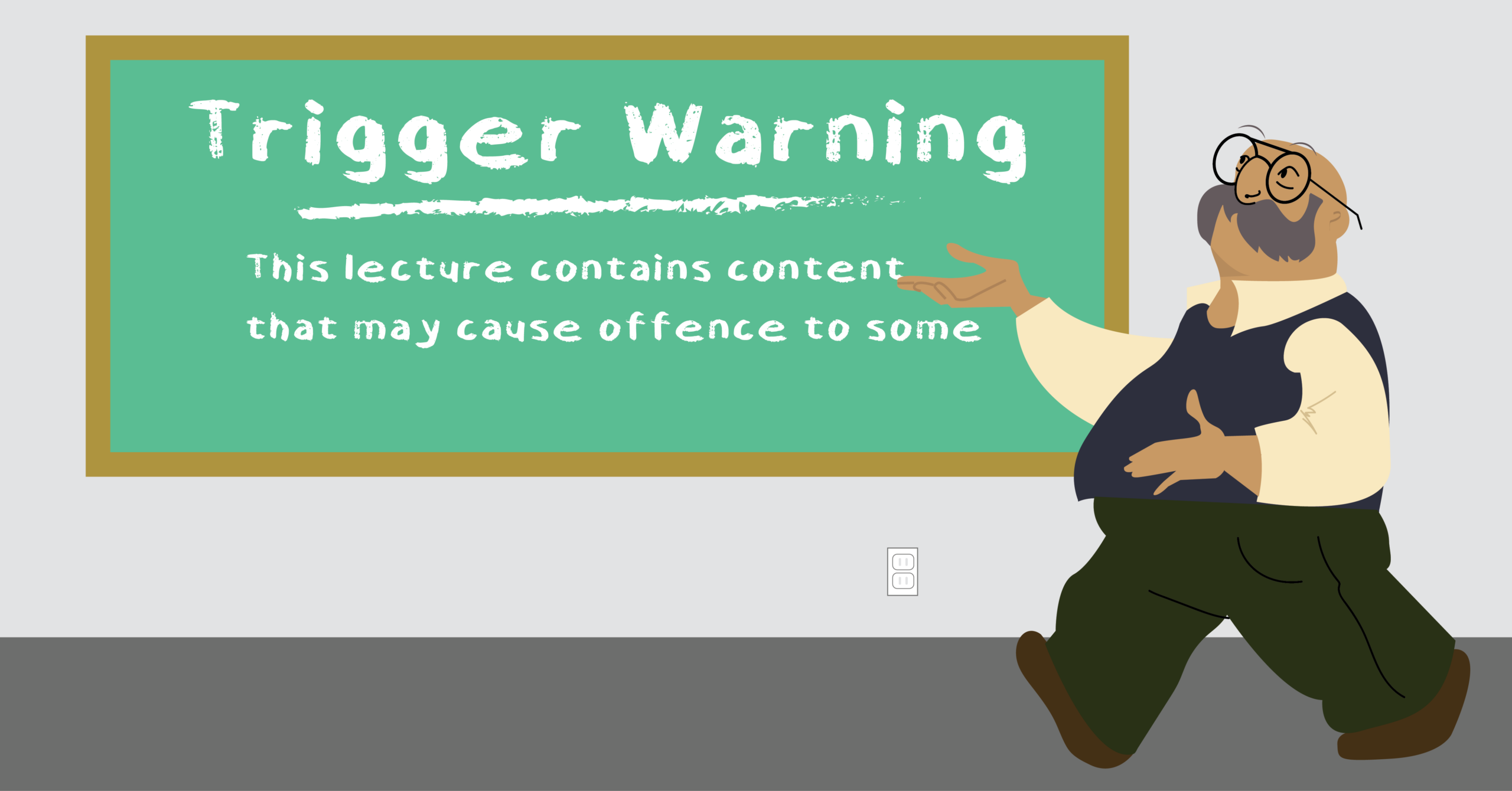The growing necessity of trigger warnings
Trigger warnings give students a diverse learning experience with varying boundaries.
Trigger warnings are statements notifying audiences of potentially disturbing subject matter. These warnings often precede social media posts and mass media content. They have grown in popularity in the last decade, with trigger warnings appearing in articles dating back to 2014.
But more recently, discussions of trigger warnings have arisen in many spaces.
In academic contexts, specifically in courses, trigger warnings can protect students, allowing them to make informed decisions about their wellbeing. They also serve as acknowledgements of the boundaries of different individuals. Although there are objections to this position, such as trigger warnings being “anti-intellectual,” the presence of trigger warnings can actually enhance the educational experience for students. Ultimately, the usage of trigger warnings does not have to be mandatory, but a discussion about them should occur in every setting in which they may be desired.
The provision of trigger warnings can protect students from unexpected exposure to concepts that they are personally sensitive to. Trigger warnings do not necessarily discourage students from engaging with the concept at hand, but, as the name suggests, these disclaimers merely warn students that they may be exposed to a topic that can be associated with negative experiences.
This position has been met with a lot of backlash, as many scholars believe that a trigger warning encourages avoidance of distressing topics and can actually be more harmful for people. This objection, however, assumes that a warning would deter people, especially in an academic context. If a student must learn a concept that is part of the curriculum of a course, a trigger warning, at most, will only encourage them to find another, less triggering way to learn that concept. For example, some may prefer reading rather than watching. Essentially, students would still be able to learn, and they would be able to do so comfortably, either by having the ability to mentally prepare before a lecture begins or by speaking with their course instructor.
There are also concerns of censorship with the implementation of trigger warnings. However, the goal of a trigger warning is not to suppress the expression of knowledge, but to merely inform people about distressing content. Unless the teaching of the content violates a policy, it can still be taught, just with acknowledgement that it may be disturbing. Trigger warnings, in practice, will not necessarily hinder learning or teaching.
Another aspect of trigger warnings regards the qualities of a trigger. Triggers can be specific, and aside from the common triggers that many are aware of, one may wonder what exactly makes something a trigger. In 2014, Oberlin College retracted a policy on trigger warnings due to backlash from faculty members, in which one of the arguments made was that the list of trigger warnings were “potentially endless”. In response to this, course instructors should acknowledge that there may be triggers that have not been spoken about. Educators should encourage students to inform them if any coursework involves a trigger that they wish to be warned about and take it into consideration when teaching. Ensuring that course instructors make themselves available for feedback from students is closely related to the provision of trigger warnings. Research conducted by Eleanor Amaranth Lockhart, an Assistant Professor at Rowan University who advocates for trigger warnings, notes that trigger warnings do not have to be mandatory, but they are important in protecting both students and faculty, and encouraging communication.
Not everyone who has trauma may require a trigger warning, and not every trigger warning will protect everyone. Pedagogy should be dynamic, evolving constantly to ensure that the needs of students are met in a learning environment. As mentioned earlier, establishing openness to communication with students will ultimately be the best way to benefit students in classroom environments. Trigger warnings may possibly prevent the emotional shock of having to deal with a sensitive topic unexpectedly. However, having discussions with students in classes where potentially distressing topics are involved may be the best way to gauge whether trigger warnings are desired. Nevertheless, trigger warnings promote a healthy and compassionate learning environment.

